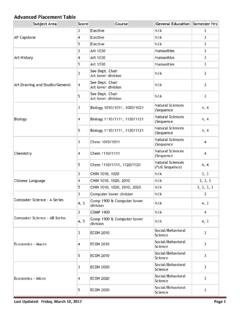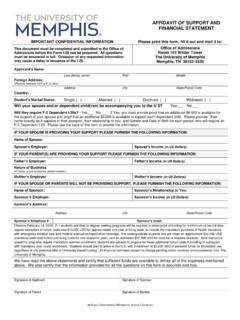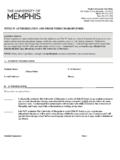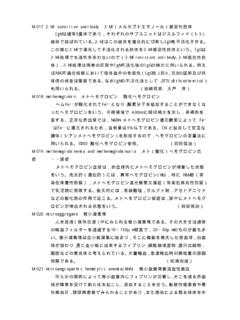Transcription of Laboratory/Research Skills for Science Resume
1 Laboratory/Research Skills for Science Resume List of Skills to assist with resumes, cover letters and interviews Animal Care Handle and restrain Weigh animals Breed various species Clean cages Administer injections Prepare special diets Anesthetize Maintain and evaluate animal records Prepare for sterile surgical procedures Perform simple surgical procedures (such as adrenalectomy) Assist in sterile neurosurgical procedures Assist in emergency medical and surgical procedures Administer medication Implant tumors into small animals Perform animal autopsy Perform microsurgery Catheterize and infuse small animal arteries Collect blood or other samples General Laboratory Pipette Weigh Sterilize Filtrate Titrate Wash/Clean glassware Prepare media Practice sterile techniques Electron Microscopy Fix Embed Stain Section Laboratory/Research Skills for Science Resume Process film Print film Operation of Electron Microscopy Prepare grids Form film on grids Histology Routine frozen sections of whole animal brains Cell and fiber stains Perfusions of animals Staining processes Embedding
2 Processes: paraffin, celloidin Autoradiography of tissue sections Immunology Plaque assay for antibody forming cells hemagglutination and hemolysis assay Florescent antibody technique Lyophilization Spectrofluorometry Isolate viruses Cytotoxicity assay Lymphocyte culture Bacteriology Maintain and purify: bacteria, phage stocks, cell culture Cell and Tissue culture Culture transfers Inoculation Prepare media Prepare and assay bacteriophage lysates Pour plates Plasmid amplification Biochemistry/Genetics Purify and characterize enzymes Determinations: RNA, protein, nucleic acid, phosphate and others Gradients: density, equilibrium, etc. Laboratory/Research Skills for Science Resume Assays: enzyme, infectivity, blood coagulation factors, and other (biochemical) assays Spectrophotometers: UV, infrared, atomic absorption Electrophoresis: immune, acrylamide gel, paper Chromatography: paper, thin layer Column.
3 Ion exchange resins, gel, gas liquid, HPLC Purify blood coagulations factors Immunoprecipitation techniques Analyze peptides Manipulate DNA Extract phenols from DNA Equilibrium sedimentation centrifugation Prepare antibodies Analyze lipids Synthesize peptides Mutagenesis Test for mutations Cell fractionation Transduction Conjugation Breed and maintain a population of drosophila, rodents or other species Prepare and identify mutants with mutagenic chemicals Radio-biological Radioimmunoassays Handle radioisotopes Irradiate tumors in vivo Label radioactives Radioisotope counters: autogamma, scintillation, scanning, gas flow Laboratory/Research Instruments Light microscope Autoanalyzer Micro Burette pH meter Centrifuges: standard, high speed Incubators Laboratory/Research Skills for Science Resume Dark room equipment Precision balance Volumetric glassware Oscilloscopes Blood gas analyzer Microtomes: paraffin, celloidin X-ray equipment Other Skills or Relevant Experience Data processing Laboratory Statistical analysis Programming Skills Database Skills Computer languages (HTML, C++, etc.)
4 Light microscopy, fluorescence microscopy, and scanning electron microscopy Dissection Molecular (gene) cloning Mammalian cell culture Restriction analysis, gel electrophoresis, and gel documentation UV/Vis spectrophotometry Enzyme-linked immunosorbent assays (ELISA) Design, conduct and interpret scientific research Isolate and analyze DNA, RNA and protein Sequence genomes Conduct statistical analysis Apply a scientific approach to problems Communicate findings using models, charts and graphs Communicate new research findings to lay audiences Communicate biological research findings using scientific writing Anatomy, Botany, and General Biology Use of a microtome to make slides staining techniques Laboratory/Research Skills for Science Resume Medical Patient sample handling techniques Making an accurate white blood cell count Antibody testing methods such as ELISA Loop Mediated Isothermal Amplification (LAMP) (This may also be appropriate under Microbiology)
5 Microbiology Use of micropipetter Molecular cloning Use of restriction enzymes Use of PCR ( Polymerase Chain Reaction) machines Replica plating Growth of competent cells Molecular Biology Agarose Gel Electrophoresis Cell fractionation Polyacrylamide Gel Electrophoresis Blotting techniques Ex: Western Blot












